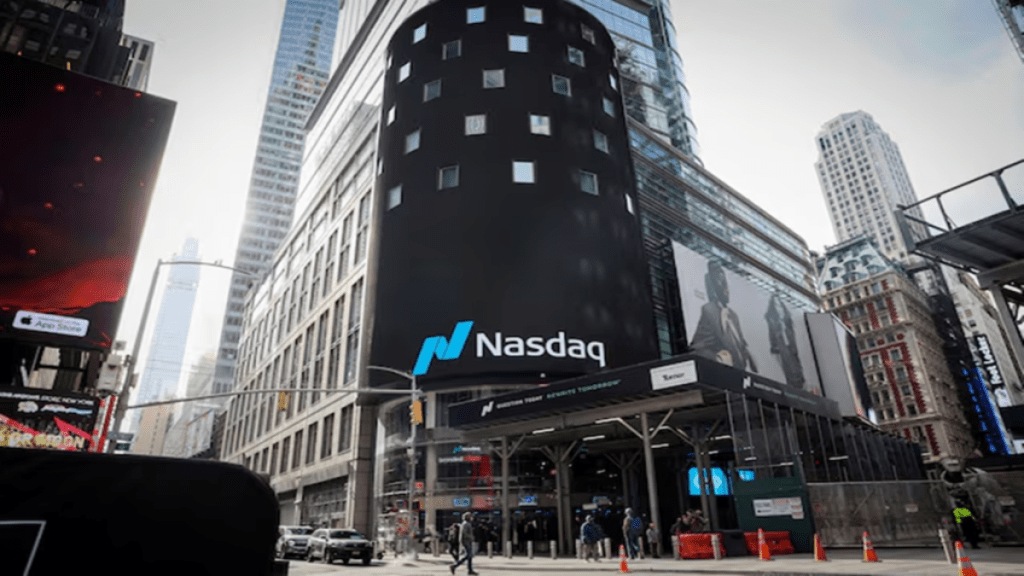Nvidia reported its fourth-quarter earnings after the bell on Wednesday, exceeding Wall Street expectations and signaling continued confidence in its AI-driven growth. The chipmaker also provided a robust revenue forecast for the current quarter, reinforcing its dominance in the booming artificial intelligence sector.
Q4 Performance Surpasses Projections
Nvidia posted revenue of $39.33 billion, surpassing analyst estimates of $38.05 billion, according to LSEG. The company also outperformed in earnings per share, reporting $0.89 adjusted, higher than the expected $0.84.
For the first quarter of fiscal 2025, Nvidia anticipates revenue of $43 billion, plus or minus 2%, exceeding Wall Street’s projection of $41.78 billion. This forecast suggests a 65% year-over-year growth, though it marks a slowdown compared to the 262% growth recorded in the same period a year ago.
Net income for the quarter surged to $22.09 billion, nearly doubling from $12.29 billion in the previous year. However, the company’s gross margin fell to 73%, attributed to the rising complexity and cost of newer data center products.
AI Boom Fuels Data Center Revenue
Nvidia continues to ride the AI wave, with data center revenue reaching $35.6 billion—a 93% annual increase and exceeding StreetAccount’s estimate of $33.65 billion. The data center segment now represents 91% of Nvidia’s total sales, compared to 83% last year and 60% in 2023.
Much of the focus this year is on Blackwell, Nvidia’s next-generation AI processor. The company reported $11 billion in Blackwell revenue in Q4, with CEO Jensen Huang describing demand as “amazing.” Chief Financial Officer Colette Kress added that Blackwell represents “the fastest product ramp in our company’s history.”
Major cloud service providers, including Amazon, Microsoft, and Google, accounted for 50% of Nvidia’s data center revenue, highlighting its critical role in AI infrastructure.
AI Inference to Drive Future Demand
While Nvidia’s GPUs were traditionally used for AI model training, the company expects future demand to be driven by AI inference, where models process and generate responses. Huang emphasized that next-generation AI algorithms could require millions of times more computing power, potentially extending Nvidia’s dominance in the chip market.
Kress also addressed concerns about efficiency-focused AI models limiting demand for Nvidia’s chips. She stated that advanced reasoning AI models could require up to 100 times more compute power per task, reinforcing long-term demand for Nvidia’s products.
Challenges in Gaming and Networking Segments
While Nvidia’s data center business soared, its gaming segment underperformed, reporting $2.5 billion in sales, falling short of StreetAccount’s $3.04 billion estimate. Gaming revenue declined 11% year-over-year, despite the company launching new graphics cards based on the Blackwell architecture.
Nvidia’s networking revenue, a key part of its data center operations, came in at $3 billion, but was down 9% from last year, signaling potential headwinds.
Automotive Segment Shows Promise
Nvidia’s automotive business, which includes AI chips for cars and robotics, saw a 103% annual growth, generating $570 million in revenue. Although still a small part of its overall business, this sector is emerging as a future growth avenue.
Massive Share Buybacks in Fiscal 2025
Nvidia continued its aggressive stock repurchase program, spending $33.7 billion on share buybacks in fiscal 2025, reflecting its confidence in sustained growth.
The company cautioned that gross profit margins may be tighter than expected as it accelerates the rollout of its new Blackwell chip design. Additionally, potential U.S. tariffs pose a risk to its results. After swinging between gains and losses, Nvidia shares dipped slightly, falling less than 1% in late trading on Wednesday.

